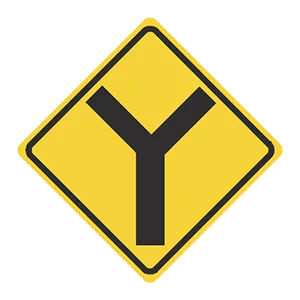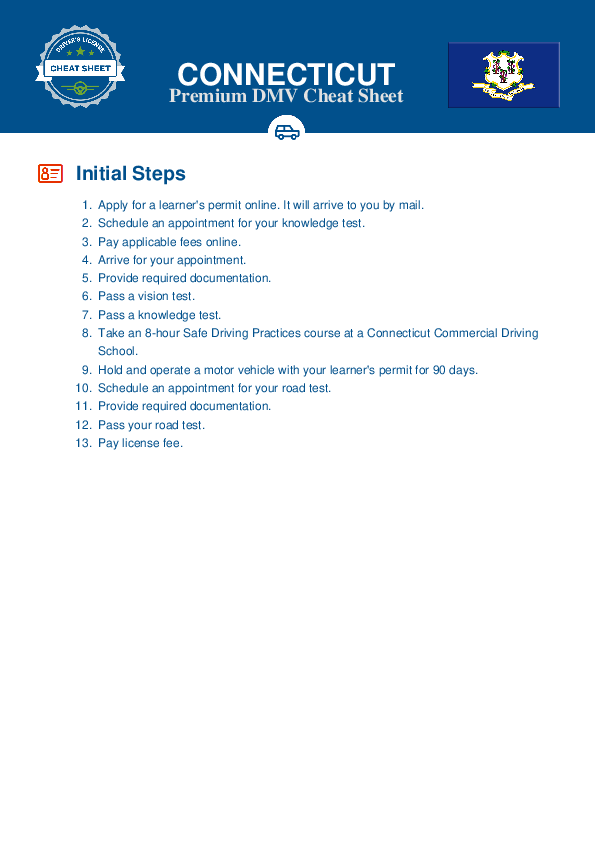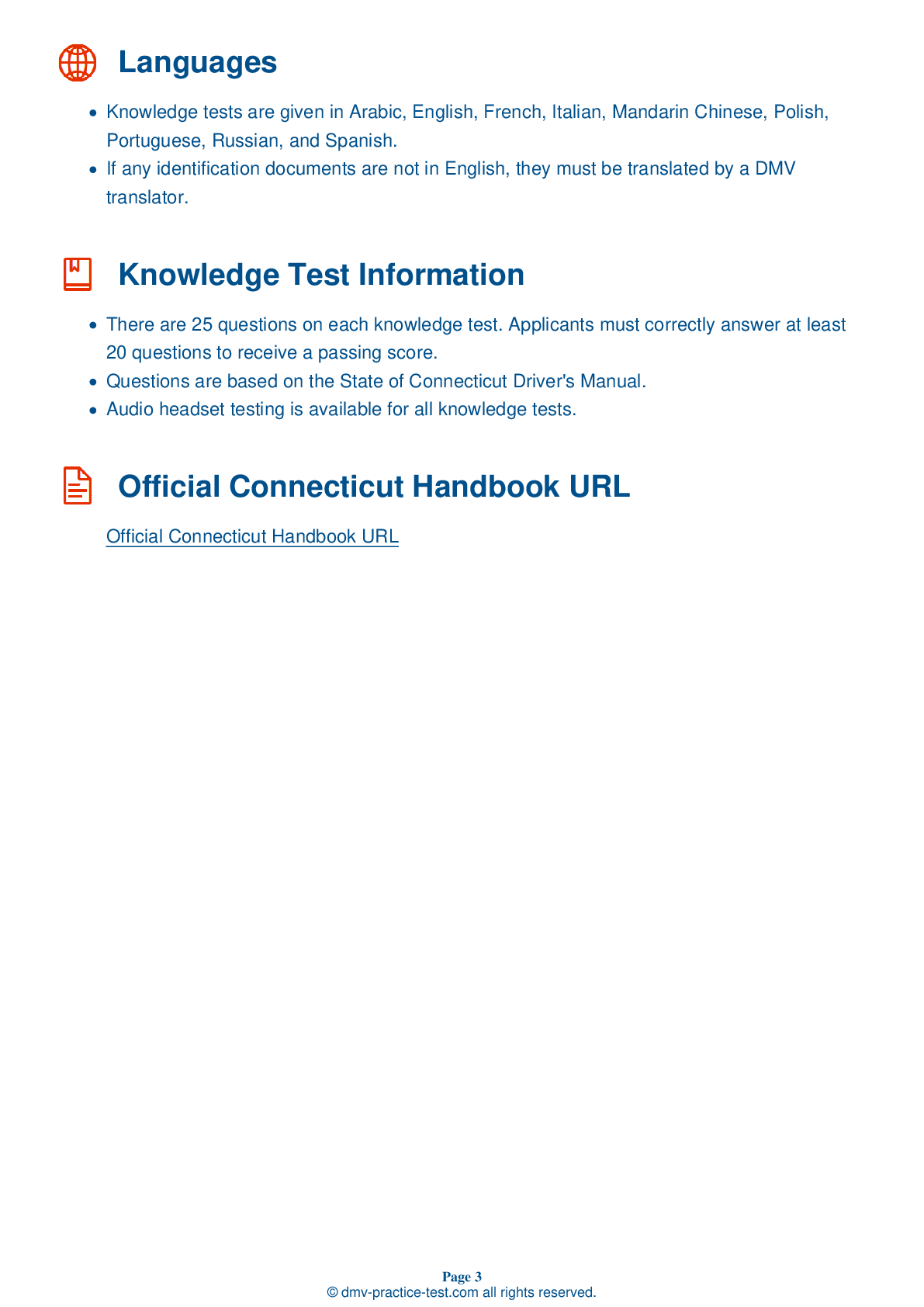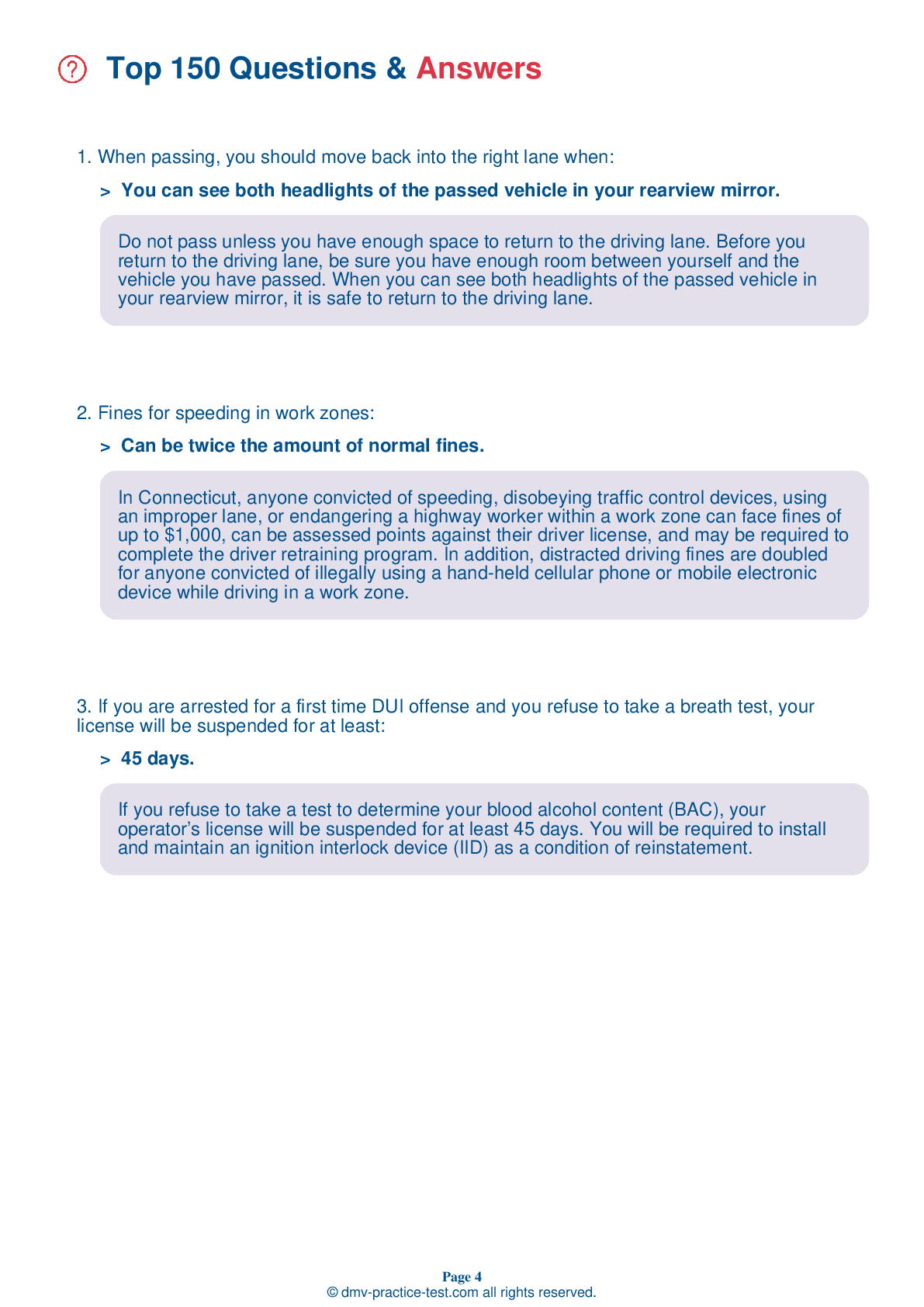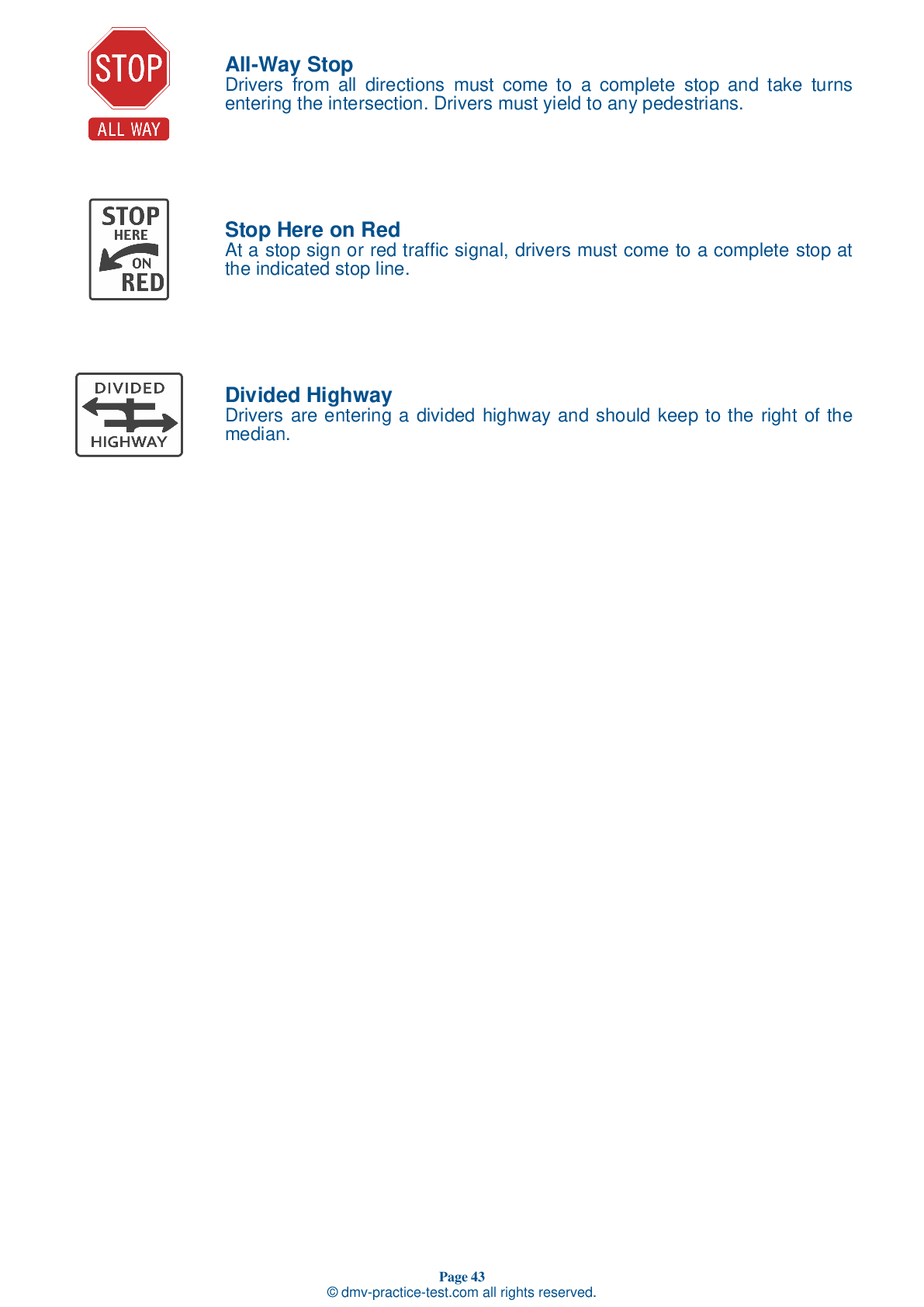FREE Connecticut DMV Practice Test #1 Page 3 of 3
This set of Connecticut DMV practise tests was just updated for January 2025. It includes questions based on the Connecticut Driver Handbook's most essential traffic signs and regulations for 2025. Use actual questions that are very similar (often identical!) to the DMV driving permit test and driver's licence exam to study for the DMV driving permit test and driver's licence exam.
Each practise test question has a hint and explanation to assist you in remembering the concepts. The written component of the official DMV test will include questions about road rules, traffic signs, and driving statutes, as well as information from the Driver Handbook.
To achieve the required passing grade, you must correctly answer 20 of the 25 questions. Take our DMV practise exam to help you prepare for your Connecticut instruction permit or driver's licence.
The DMV exam is available in several languages.
Using any form of testing help will result in an automatic fail, and the DMV may take further action against your driver's licence, so avoid it.
17 . After you have held a license for six months, which of the following passengers cannot be in your vehicle while you are driving?
During the first six months of having a license, a newly licensed driver may only be accompanied in the vehicle by a driving instructor, their parents or guardians, or someone at least 20 years of age with certain license restrictions. During the next six months, the only additional passengers allowed in the vehicle are members of the driver’s immediate family.
18 . When driving in fog, it is best to drive with:
Use low beam headlights when driving in fog, rain, or snow. High beams may reflect off of the weather and make visibility even poorer.
19 . If your vehicle starts to lose traction because of water on the road, you should:
When driving in heavy rain at speeds as low as 30 mph, your tires may lose all contact with the road and instead ride up on a layer of water above the surface of the road. This is called "hydroplaning." If your vehicle starts to hydroplane, slow down gradually and do not apply the brakes.
20 . This sign means:
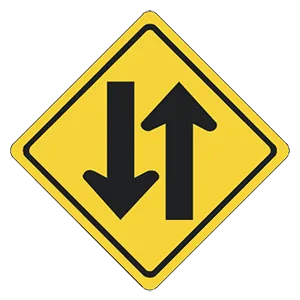
This sign informs drivers that they are leaving a divided roadway and approaching a two-way highway.
21 . This sign means:

Signs with a red circle and diagonal line over a black symbol indicate that the action represented by the symbol is prohibited. In this case, the sign indicates that left turns are prohibited.
22 . You may not park within how many feet of a stop sign?
There are many areas where you cannot park. Do not park within 25 feet of a stop sign at any time.
23 . You are approaching an intersection where a traffic signal is displaying a steady yellow light. If you have not already entered the intersection, you should:
At an intersection controlled by a steady yellow light, you should bring your vehicle to a safe stop. If you are already within the intersection when the light changes from green to yellow, continue through the intersection at a safe speed.
24 . How many alcoholic drinks does it take to affect your driving ability?
It is not advisable to drive after drinking any amount of alcohol. Even a single drink will affect your ability to drive safely.
25 . This road sign means:
